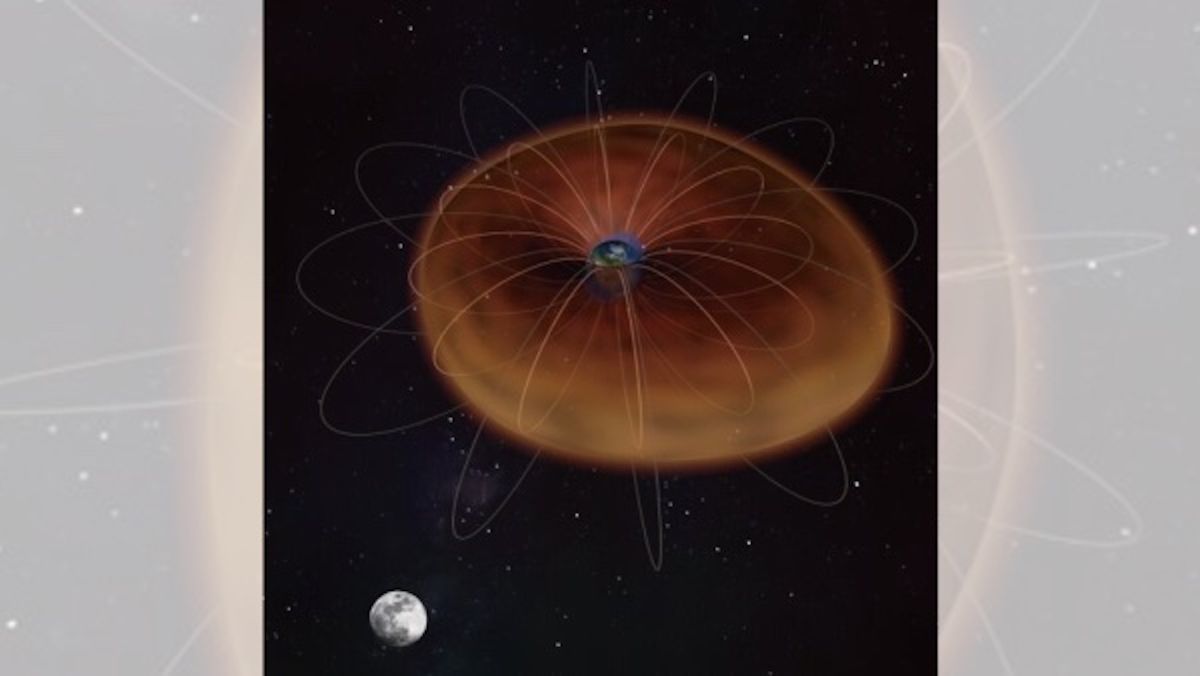The moon has a hidden tide that pulls on Earth's magnetosphere, new study reveals
By Harry Baker published about 24 hours ago
Researchers have detected fluctuations in Earth's magnetosphere created by the same tidal forces that the moon exerts on the oceans.

An image of the Earth and moon comparing ocean tides (shown as a small blue ring) to plasmasphere tides (shown as a large orange ring) (Image credit: Chinese Academy of Sciences)
The moon exerts a previously unknown tidal force on the "plasma ocean" surrounding Earth's upper atmosphere, creating fluctuations that are similar to the tides in the oceans, a new study suggests.
In the moon study, published Jan. 26 in the journal Nature Physics(opens in new tab), scientists used more than 40 years of data collected by satellites to track the minute changes in the shape of the plasmasphere, the inner region of Earth's magnetosphere, which shields our planet from solar storms and other types of high-energy particles.
The plasmasphere is a roughly doughnut-shaped blob of cool plasma(opens in new tab) that sits on top of Earth's magnetic field lines, just above the ionosphere, the electrically charged part of the upper atmosphere. The plasma, or ionized gas, in the plasmasphere is denser than the plasma in the outer regions of the magnetosphere, which causes it to sink to the bottom of the magnetosphere. The boundary between this dense sunken plasma and the rest of the magnetosphere is known as the plasmapause.
"Given its cold, dense plasma properties, the plasmasphere can be regarded as a 'plasma ocean,' and the plasmapause represents the 'surface' of this ocean," the researchers wrote in the paper. The moon's gravitational pull can distort this "ocean," causing its surface to rise and fall like the ocean tides.
More:
https://www.space.com/plasmasphere-moon-tidal-force
